Jean-Étienne Liotard Breakfast Scenes
The 18th-century painter, miniaturist, and pastelist Jean-Étienne Liotard is perhaps one of the most eccentric artists of his time. Known for his...
Anna Ingram 16 September 2024
Rococo was the major art movement of the 18th century. Its main characteristics are lightness, decorativeness, and subjects from everyday life of the elite. During this period, we find Rococo in most European countries, with Paris, Venice, and London being the three major cities that impacted the development of the movement. Although the main characteristics are similar, Rococo took a different form in different countries, with the French Rococo being the best-known of them all. Let’s see some of the greatest Rococo artists.
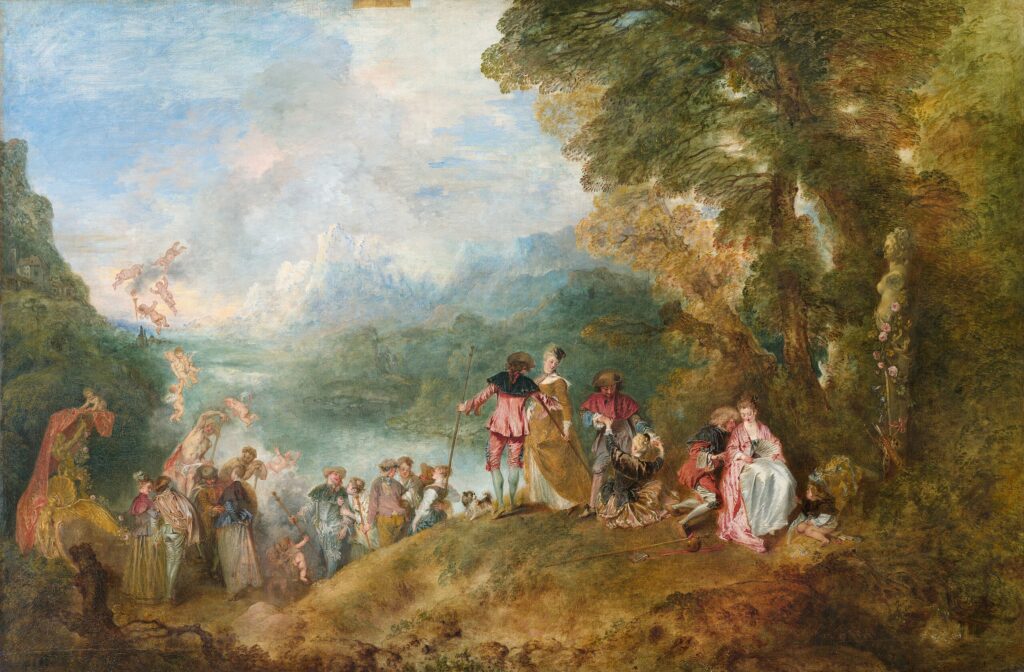
Rococo Artists: Antoine Watteau, Pilgrimage to the Isle of Cythera , 1718, Charlottenburg Palace, Berlin, Germany.
Antoine Watteau (1684-1721) was one of the forerunners of French Rococo. He is known for his fête galantes, a unique subgenre that he created. The fête galante, which means courtship party, showed members of the French aristocracy flirting usually in a park or the countryside. The term was created to describe the introductory piece of Watteau in the French Academy of Arts.
His introductory painting is called Pilgrimage to the Isle of Cythera and shows elegantly attired men and women in different stages of flirting. The work does not depict a certain story nor does it promote a moral lesson. Simply, it is meant to look pleasing to the eye and show people having fun. It is interesting to note that Antoine Watteau was ambiguous about certain aspects of the painting. He never clarified if the party depicted is embarking on its journey to Cythera or if they are leaving the island. That is for the viewer to decide.
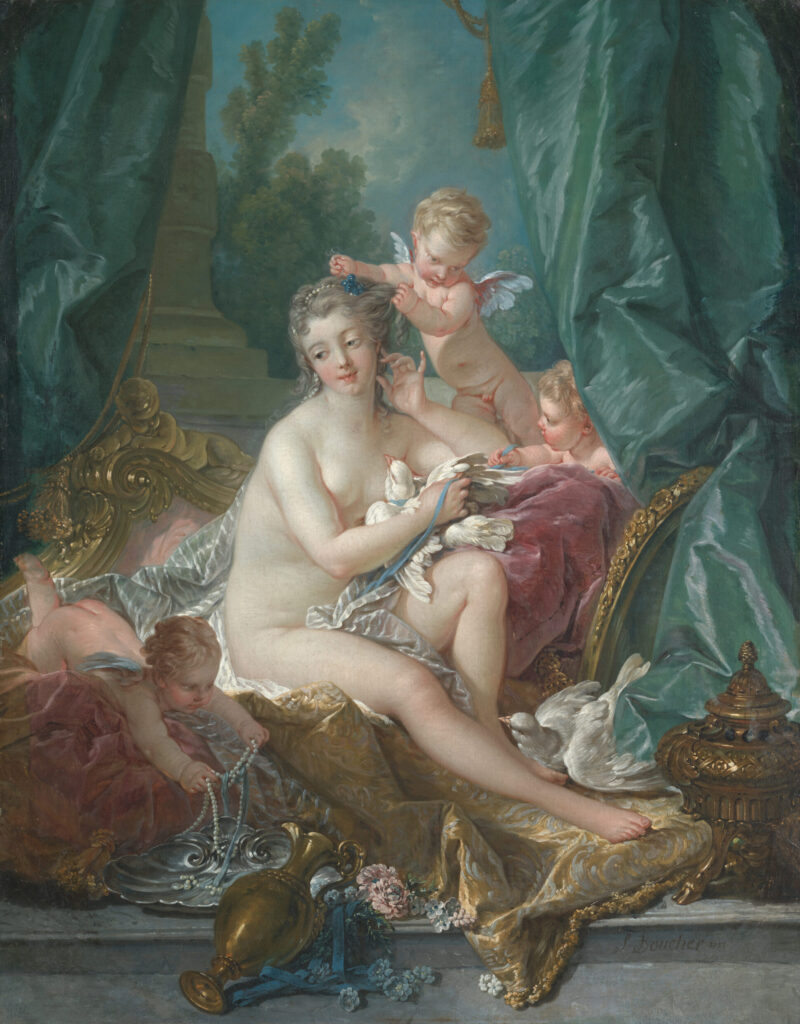
Rococo Artists: François Boucher, The Toilette of Venus, 1751, Metropolitan Museum of Art, New York City, NY, USA.
François Boucher (1703-1770) was probably the most successful painter of Rococo. His style is essentially artificial and that is made on purpose. He created dream worlds where everything is beautiful and quaint. Since he mostly worked for the French royal court, in his paintings we see the superficiality that characterized the royal court at the time. He became the favorite painter of Jeanne Antoinette Poisson, better known as Madame de Pompadour.
He painted The Toilette of Venus for her, to decorate her private rooms in the Château de Bellevue, which was built for her as a gift from the king of France. The painting is entirely decorative. The goddess sits languidly on an opulent sofa while putti makes her hair. Everything is luxurious and beautiful. François Boucher took great care to give the goddess alabaster skin and showed great appreciation for every little detail that enhances the sense of wealth and opulence.
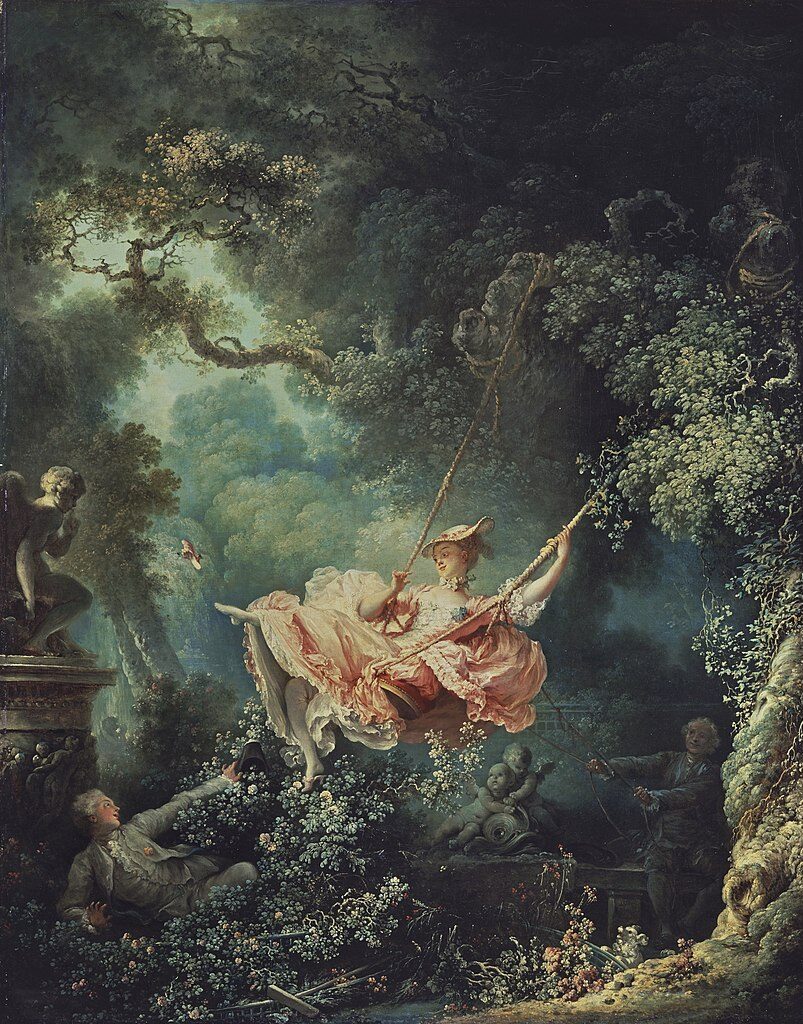
Rococo Artists: Jean-Honoré Fragonard, The Swing, 1767-1768, The Wallace Collection, London, UK.
Jean-Honoré Fragonard is probably the most successful student of François Boucher. He worked in the last decades before the French Revolution, that changed everything in France. Fragonard’s paintings depict the carefree lives of the French aristocracy during that period.
The Swing is his most famous work. In the painting, a young man is hidden among the bushes while his beloved sits on the swing. To the right, we can see an older man, probably the husband of the woman, but she pays no attention to him. She swings just so her lover can admire what rests beneath her skirts. The woman is quite aware of what is happening. We can see it in the look on her face. The lush landscape reflects the sensual subject of the painting.
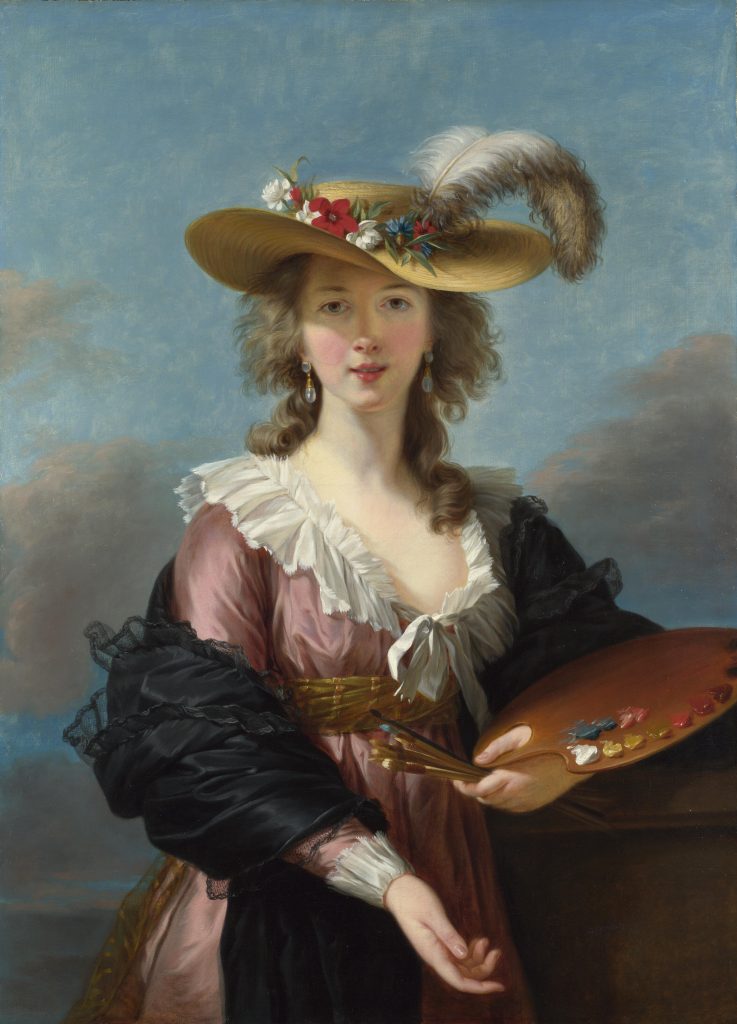
Rococo Artists: Élisabeth Vigée Le Brun, Self Portrait in a Straw Hat, 1782, National Gallery, London, UK.
Élisabeth Vigée Le Brun (1755-1842) was one of the most successful portrait painters in the years preceding the French Revolution. She became the favorite painter of Marie Antoinette and painted several portraits of the queen of France and her family. Le Brun was trained in her early years by her father, who was also a painter but, was largely self-taught since a woman of her time could not get formal training. Another important man in her life was her husband, an art dealer, who provided her with important contracts and commissions when she was starting.
In Self Portrait in a Straw Hat, we can see how the artist wanted to be perceived. She poses in the open air wearing an elegant dress and a straw hat adorned with flowers. On her left hand, she holds a palette full of colors and some brushes. All in all, she is a woman of the upper class but also an accomplished professional painter.
And now for something completely different…
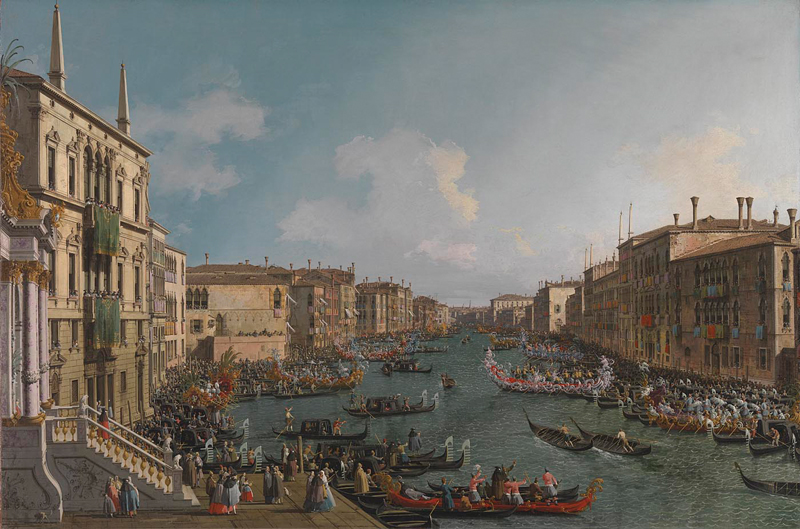
Rococo Artists: Canaletto, A Regatta on the Grand Canal, 1740, National Gallery, London, UK.
The center of Rococo in Italy was Venice and Canaletto (Giovanni Antonio Canal, 1697-1768) was its greatest representative. From the 16th century on, Venice has been one of the most popular tourist destinations in the world. The city was one of the stops of the Grand Tour, where young men of the aristocracy visited Venice to enhance their knowledge of art and see the world before getting into business. Many of them, as modern tourists do nowadays, wanted a memento of the city. Enter Canaletto and his famous vedute. Vedute were the cityscapes showing the most famous monuments or important events in the life of the city.
One such event in the history of Venice was the Regatta on the Grand Canal, an annual race on the 2nd of February. In the center of Canaletto’s painting we see the one-oared gondolas racing to the Rialto Bridge that can be glimpsed in the background. The Regatta used to draw many visitors to Venice each year as it coincided with the famous Venice carnival.
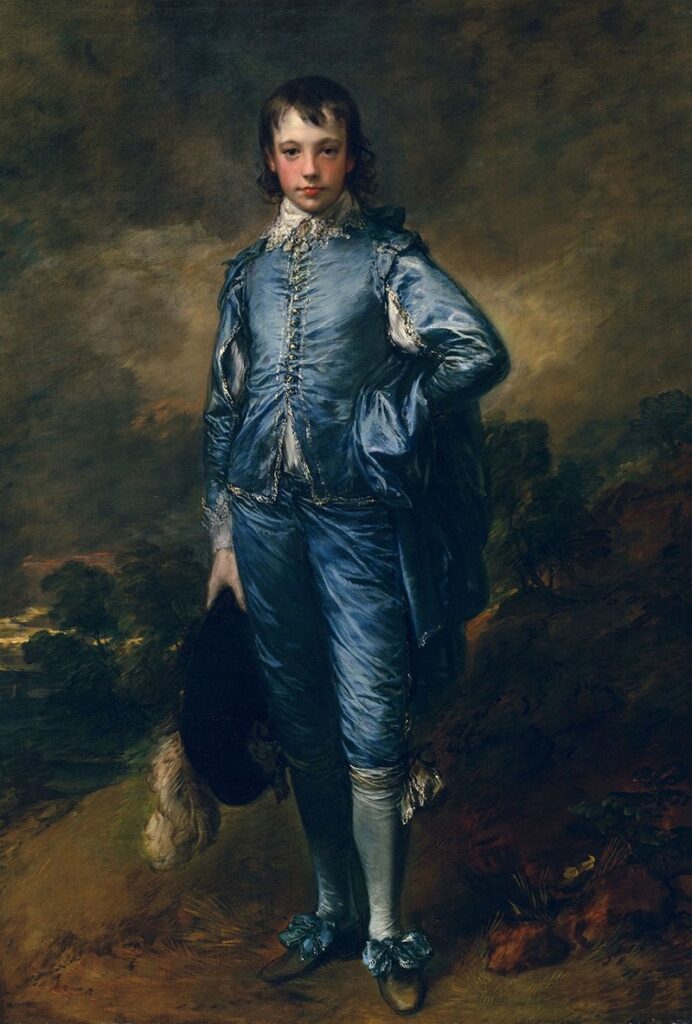
Rococo Artists: Thomas Gainsborough, The Blue Boy, 1770, The Huntington Library, San Marino, CA, USA.
Portraiture was the thing for British Rococo and Thomas Gainsborough (1727-1788) was a major representative of the style. Gainsborough studied under a French printmaker, and he was thus influenced by the French idiom of Rococo.
The Blue Boy is a very characteristic painting of his style. A young man wearing an elaborate costume looks defiantly at the view. Even though the painting was created in 1770 his outfit dates to the 17th century and is very similar to the clothing we see in the portraits of young men by Dutch master Anthony Van Dyck. An interesting fact about The Blue Boy is that he is considered a queer icon since his outfit and his pose seem to suggest that.
DailyArt Magazine needs your support. Every contribution, however big or small, is very valuable for our future. Thanks to it, we will be able to sustain and grow the Magazine. Thank you for your help!